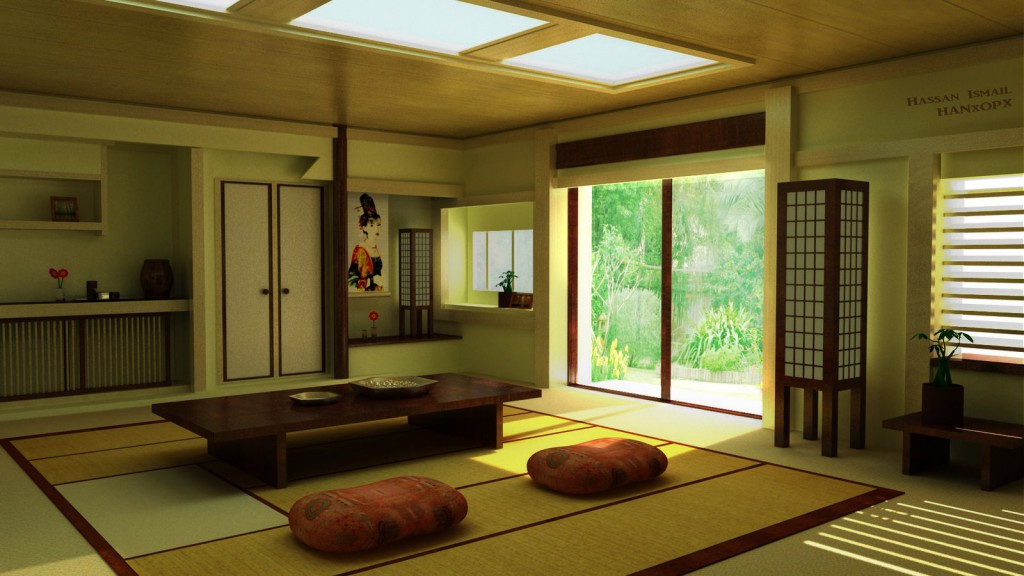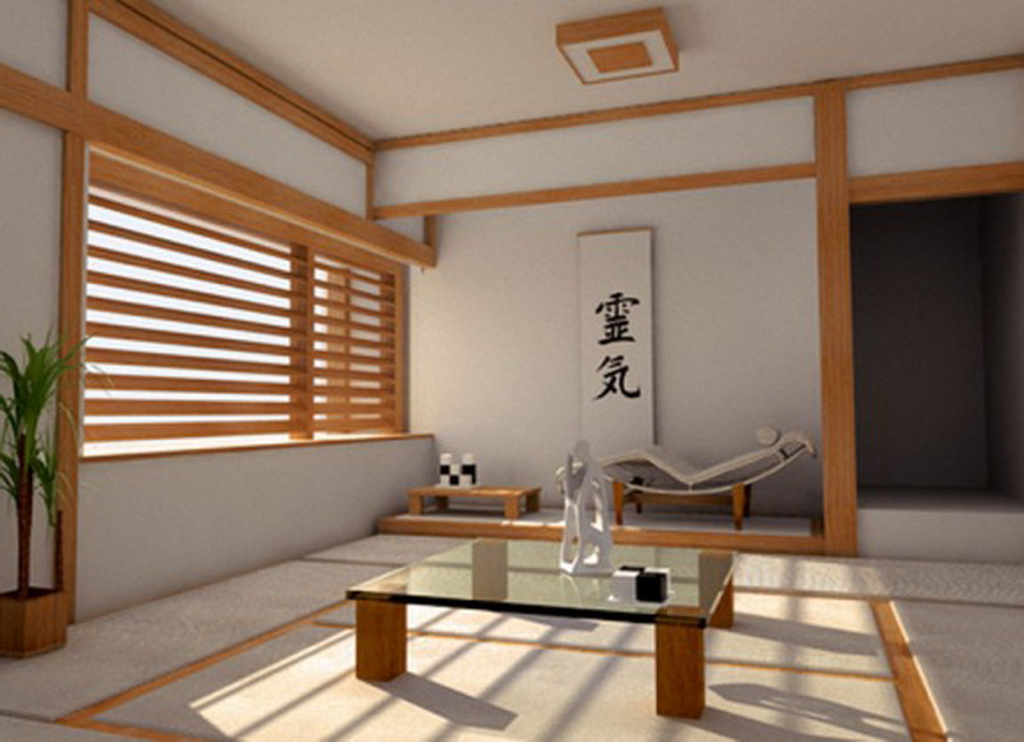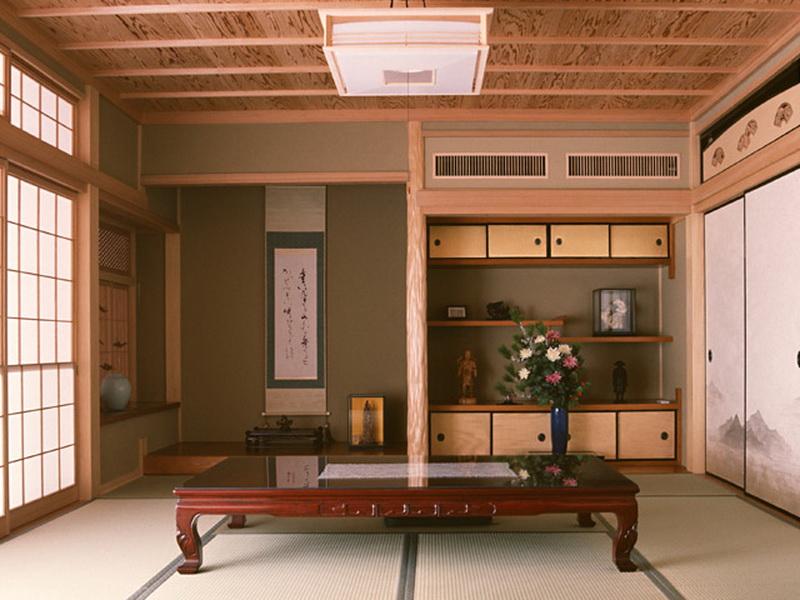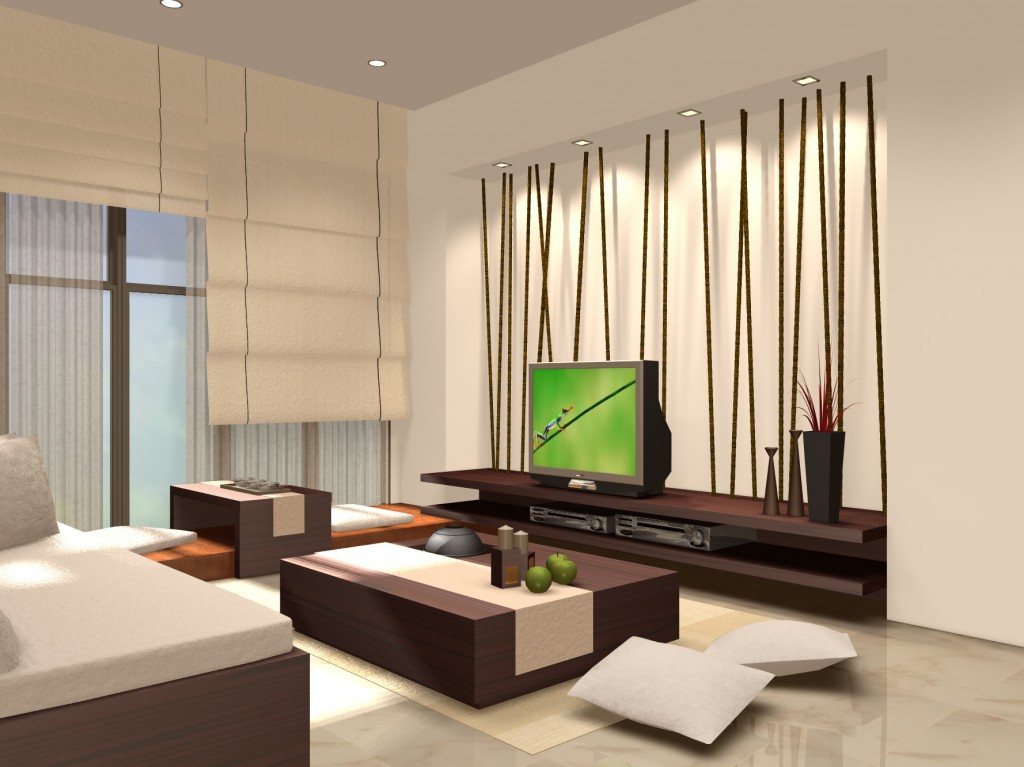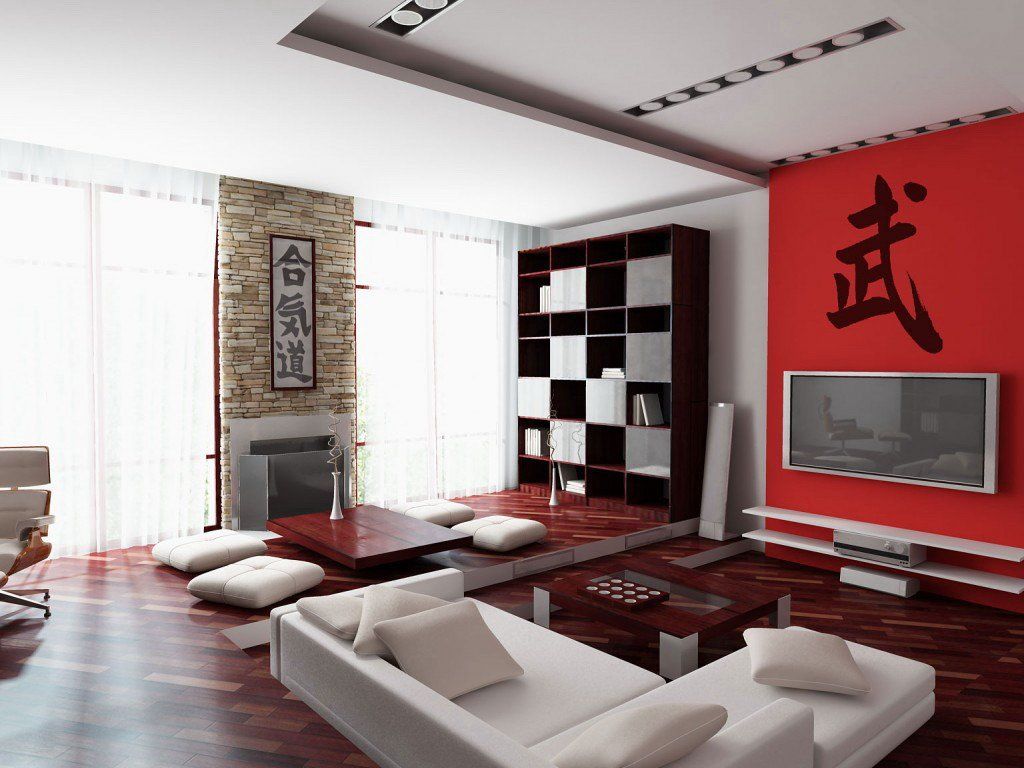Japanese-style interior: performance features
Japan is a country with rich and distinctive cultural traditions, and it is not surprising that it is so popular now. The Japanese style attracts with laconicism bordering on asceticism. This is “beauty in the small”, beauty without pathos, unnecessary details and flashy colors. This is minimalism. At the same time, the Japanese interior does not look meager. Its basic principles are minimalism and functionality, that is, just what the owners of one-room apartments should strive for. In this material, we will try to explain to you the basic principles of design in the Japanese style.
Furniture
First of all, it is worth noting that in the traditional Japanese design in the spirit of minimalism there are not many familiar objects - high tables and chairs, as well as doors. Doors, as you understand it, were brought to Japan by Europeans, before that only screens and partitions were used there. These lightweight constructions allow you to easily divide the room into functional zones, without burdening the space. In addition, the screens can be arranged in a new way each time. Their serious drawback is the almost complete absence of sound insulation.
Tables in Japan are low, and they sit behind them most often on the floor, less often - on special chairs. Low tables significantly expand the space and, moreover, are lightweight, making it easier to move them to another place.
Space organization
The classic Japanese interior is an amazing space that Europeans could even call "empty." In fact, this is not so: not emptiness - minimalism. Emptiness is a skillful illusion created by certain methods. The main of these principles is simple - “nothing more”!
- the room should remain free, filled with light and air;
- the environment of the room should, as far as possible, be combined with the surrounding landscape;
- discard uncomfortable pieces of furniture. Observe not the letter of the interior, but its spirit;
- the interior space of the room is able to quickly and easily transform. The harmonious combination of “momentary” (screens, sliding partitions) and “eternal” (load-bearing structures of the building) is an architectural and design embodiment of the philosophy that has followed Japanese society for many centuries;
- the room must in any state retain its individual features, which can be achieved with the help of stable space elements - niches in the walls, floor height differences, constant light sources;
- the center of the home is a compositional center, where a table or a traditional futon mattress is usually located, depending on the time of day. Other interior elements are located around the perimeter.
Accessories
Since the interior in the Japanese style is extremely concise, like any other interior in the spirit of minimalism, special attention should be paid to the selection and placement of accessories. Here are a few basic principles:
- trinkets and souvenirs should be removed;
- all unnecessary objects that can be hidden must be hidden;
- favorite books or dishes can be placed on open shelves;
- only those items that are regularly used by the owners of the apartment should be present;
- it is allowed to leave Buddha figurines, cult things and objects that are of great importance to the owners.
If you have firmly decided to place a picture or a flashlight with a hieroglyph on the wall or in a niche, be sure to check its value. Better a few times.The landlord must know exactly what the character means. Symbols symbolizing happiness and prosperity are usually used, but do not blindly trust price tags and sellers. It is better to consult a specialist.
If you want to make your interior even more Japanese, do not forget about bamboo rugs, caskets, decorative bonsai trees, simple mats and other things in oriental style.
It is customary to place on one wall only one niche with a statue or a vase, only one painting, on which the main emphasis is placed. According to the Japanese, hanging several pictures on the wall is how to listen to several songs at once.
Decor
Lighting in the Japanese interior is given great attention. One of the features of the Japanese interior is the predominance of natural light, artificial light is most often muffled. Light should be diffused and soft, its task is to emphasize beauty. For this reason, spotlights are more suitable for lighting specific areas than a centralized luminaire (such as a chandelier). When creating a lighting system for a Japanese-style apartment, remember this analogy: the bright lighting of European houses is the light of the Sun, the unobtrusive lighting of a Japanese house is the light of the Moon.
When it comes to choosing colors for interior decoration, the Japanese tradition suggests using discreet, pastel colors and shades. The Japanese do not like stone surfaces, preferring wooden ones, this also applies to the floor. Natural wood or reliable and durable bamboo are welcome. Windows are best closed with panel Japanese curtains.
When creating an interior in the style of Japanese minimalism, the use of natural materials is encouraged. Bamboo wallpapers, natural wood furniture, natural fabrics and a minimum of plastic and synthetics - this is the formula by which materials for a Japanese-style room are selected. Walls can be decorated with bamboo wallpaper, sheathed with light wooden panels or covered with natural cotton and linen in light shades.
Conclusion
The interior in the style of Japanese minimalism is not suitable for everyone. Those who are used to the fast-moving life of megacities will feel uncomfortable in such a room. The Japanese interior is ideal for those who come home to relax, relax and, possibly, even go inside and meditate. The apartment, decorated in Japanese style, is your personal island of measured and balanced life.
There is always a mystery in the Japanese style. The Japanese do not like to answer the question directly, clearly and verbose. So the design in the Japanese style should be thought-provoking, ask questions, and not answer them. In such an apartment, everyone can find something of their own, and that is why Japanese minimalism is so appreciated throughout the world. We hope you appreciate it.
